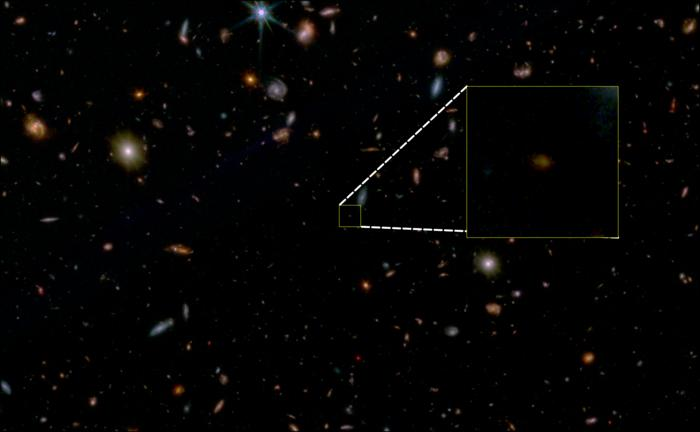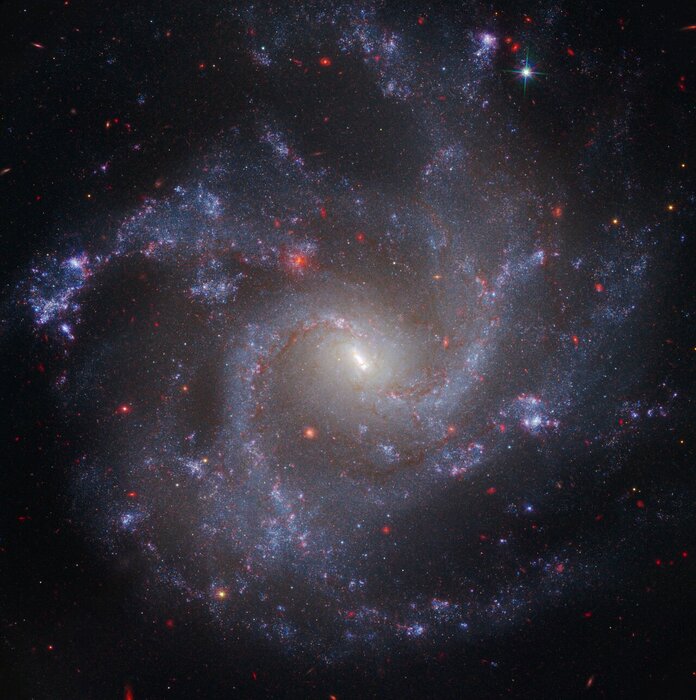Enlarge image
In this image, the newly discovered star is only visible as a small red dot between two brighter red dots, but Earendel was believed to be more than 50 times the size of our Sun
Photo: Alyssa Pagan / Brian Welch / Dan Coe / NASA / ESA
It's a clue from the early days of our Universe and a galactic record: astronomers using the Hubble Space Telescope have discovered a star older and more distant than any other telescope ever seen.
Almost 13 billion years ago, a huge, very bright and very hot star was formed, the scientists write in a study that has now been published.
The study was published in the journal »Nature«.
The star itself has long since died out, but its light is only now reaching the area around the earth.
"We almost didn't believe it at first"
"We see the star as it was about 12.8 billion years ago, about 900 million years after the Big Bang," says astronomer Brian Welch, a graduate student at Johns Hopkins University and lead author of the study.
“We almost didn't believe it at first.
We were just lucky.« Most likely, the star exploded as a supernova only a few million years after it formed.
The international research team gave the newly discovered star the old English name Earendel, which means morning star or rising light.
"A fitting name for a star we observed during a time often referred to as the Cosmic Dawn," Welch said.
And »Earendel« is the new record holder in the starry sky: So far, the star »Icarus«, which was discovered in 2018, was at the top of the well-known, distant stars.
It was formed around 9.4 billion years ago, i.e. around four billion years after the Big Bang.
The data indicated that "Earendel" was more than 50 times the size of our Sun today - and an estimated one million times brighter.
The star may have been the main star in a binary star system or even a triple or quadruple star system, Welch said.
Thanks to gravitational lensing
The fact that "Icarus" and "Earendel" could be discovered at all is due to the so-called gravitational lensing effect.
The gravity of galaxy clusters closer to Earth acts as a sort of lens, magnifying smaller objects in the background.
Without this effect, the record stars would not have been visible given their great distance.
"Earendel," for example, was "magnified by a factor of thousands through the lens of the foreground galaxy cluster," the study says.
The Hubble Space Telescope has identified older objects in the universe, including galaxies that formed 300 to 400 million years before the Big Bang.
But the individual stars in these galaxies are impossible to make out.
Future observations by the recently launched James Webb Space Telescope should now provide more details.
The Webb telescope is believed to be 100 times more powerful than the Hubble telescope.
The James Webb Space Telescope is scheduled to begin regular operations in the summer.
vki/AFP/AP








